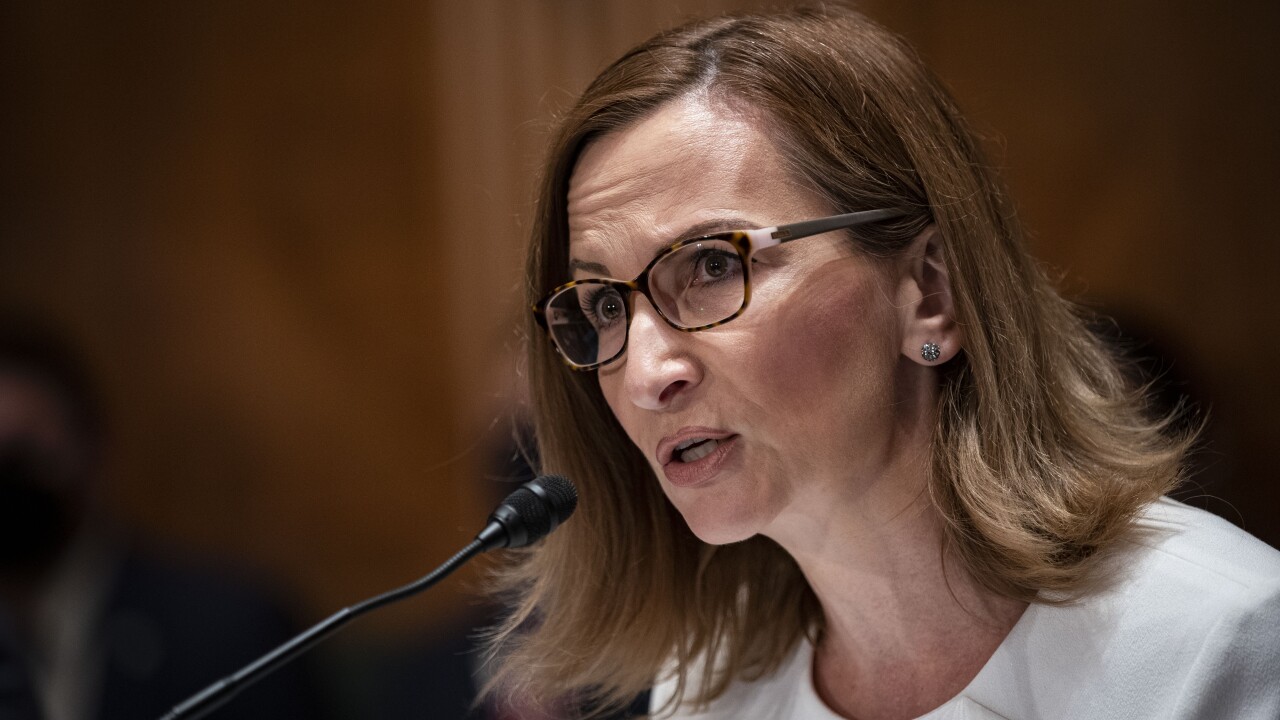- Key insights: BNY and Standard Chartered are both predicting digital assets will play a major role in payments and finance in the short term.
- What's at stake: Banks are trying to compete with fintechs that have dominated the stablecoin market.
- Forward look: BNY says the market for all digital assets will reach $3.6 trillion by 2030.
Digital payment and finance options that were recently considered experimental are quickly becoming a must-have for banks, pushing the entire industry to pick up their games in
"There is not a single market but lots of different markets around the world," Weinberg said.
BNY has released a
"The easy part will come in the first half of 2026 as companies launch their new services" EY Global Blockchain leader Paul Brody told American Banker. "The harder part will come later in the year as they start working on how to scale up usage."
What's causing the 'unlocking'?
The increased adoption of blockchain technology and digital market infrastructure will be driven by an influx of institutional capital, which is deepening liquidity, improving price discovery, and driving the development of infrastructure that connects digital and traditional markets, BNY says in its research paper.
Access to these new payment initiatives is not yet universal and traditional financial services still operate within limited hours, according to BNY, which argues that tokenized assets and blockchain-based ledgers can close this gap by enabling synchronized, real-time money movement.
Demand among capital markets investors for speed is pushing improvements in transaction processing, according to Weinberg. "While that's unrelated to digital assets or blockchain, people want more certainty regarding time of settlement, and so that leads to faster payments," she said.
That will create more demand for bank-led transaction technology that uses stablecoins, tokenized deposits or the supporting technology. "We're seeing a move toward wanting longer 'always on' markets," Weinberg said.
Stablecoins have emerged as a mainstream digital cash substitute due to their stability and have grown to over $290 billion in assets, according to BNY, which says its analysis suggests that stablecoins could grow to $1.5 trillion by 2030.
And tokenization of cash equivalents including U.S. Treasury bills, money market funds and deposits are also growing rapidly, with BNY forecasting that digital cash equivalents, including stablecoins, tokenized deposits and digital money market funds, could reach $3.6 trillion by 2030.
The combination of increased speed in capital markets, plus the emergence of blockchain and instant settlement, is converging.
This makes it vital to support a wide range of digital assets, including cryptocurrency, stablecoins and tokenized deposits, according to Weinberg. "The future state will include all of these things, alongside wires, ACH, FedNow, RTP and all of the other methods that are used to make payments today," Weinberg said.
What banks are doing
BNY's recent moves include a new
In the past two weeks alone,
Fifty-five percent of financial institutions say they are investing in stablecoins to boost the speed of payments, while their clients are seeking information about stablecoins and 36% say they want to boost interoperability for cross-border payments, according to
Just having an on-ramp between traditional money and digital assets isn't quite enough and stablecoin usage will be a good example of how this is likely to play out, Brody said, noting EY's own survey showed that nearly 54% of companies plan to use stablecoins in 2026 and their top priority will be cross-border payments.
"That means that the enterprises that want to use them will need their counterparts in other countries to be comfortable with stablecoins as well," Brody said. "It could take a bit of time for these network effects to take hold."
There are two elements of the market dynamic that Brody said will be important in the next year. The first is the emerging competition between stablecoins and tokenized deposits.
While the markets for stablecoins are still developing — as is the role for banks — fintechs such as Tether and Circle have dominated the early stablecoin market. Tokenized deposits are considered a "bank alternative" to stablecoins, though that sort of digital asset divide, with fintech stablecoins on one side and bank-led tokenized deposits on the other, has not emerged.
"This will truly be a battle between crypto-native firms and banks," Brody said.
The second major trend is how quickly on-chain securities and other tokenized assets mature, Brody said. "Today, they are not competitive with the 'classic' trad-fi versions, but the gap will close as firms work through issues like getting dividends, voting rights and competitive liquidity. As those gaps close, adoption will start to rise."
There will be a lot of growth over the next couple of years as specific coins try to gain relevance and market share, according to Tony DeSanctis, a senior director at Cornerstone Advisors, adding most uses will be business-related and international for the next three to five years.
"The bottom line is these coins will continue to grow and drive money flows until the consolidation happens around the two or three winners in the space, and once they get to scale, the earnings on these coins will likely drop," DeSanctis said. "Right now, coins are overpaying to grow and gain relevance long-term. I expect the earning rates on these coins to normalize somewhere between bank deposit rates and money market funds."
The longer-term opportunity in digital assets and related technology is in smart contracts, which enable transactions to be executed automatically when certain conditions are met. "The execution and use cases on those will take time to create and adopt," Cornerstone's DeSanctis told American Banker.






